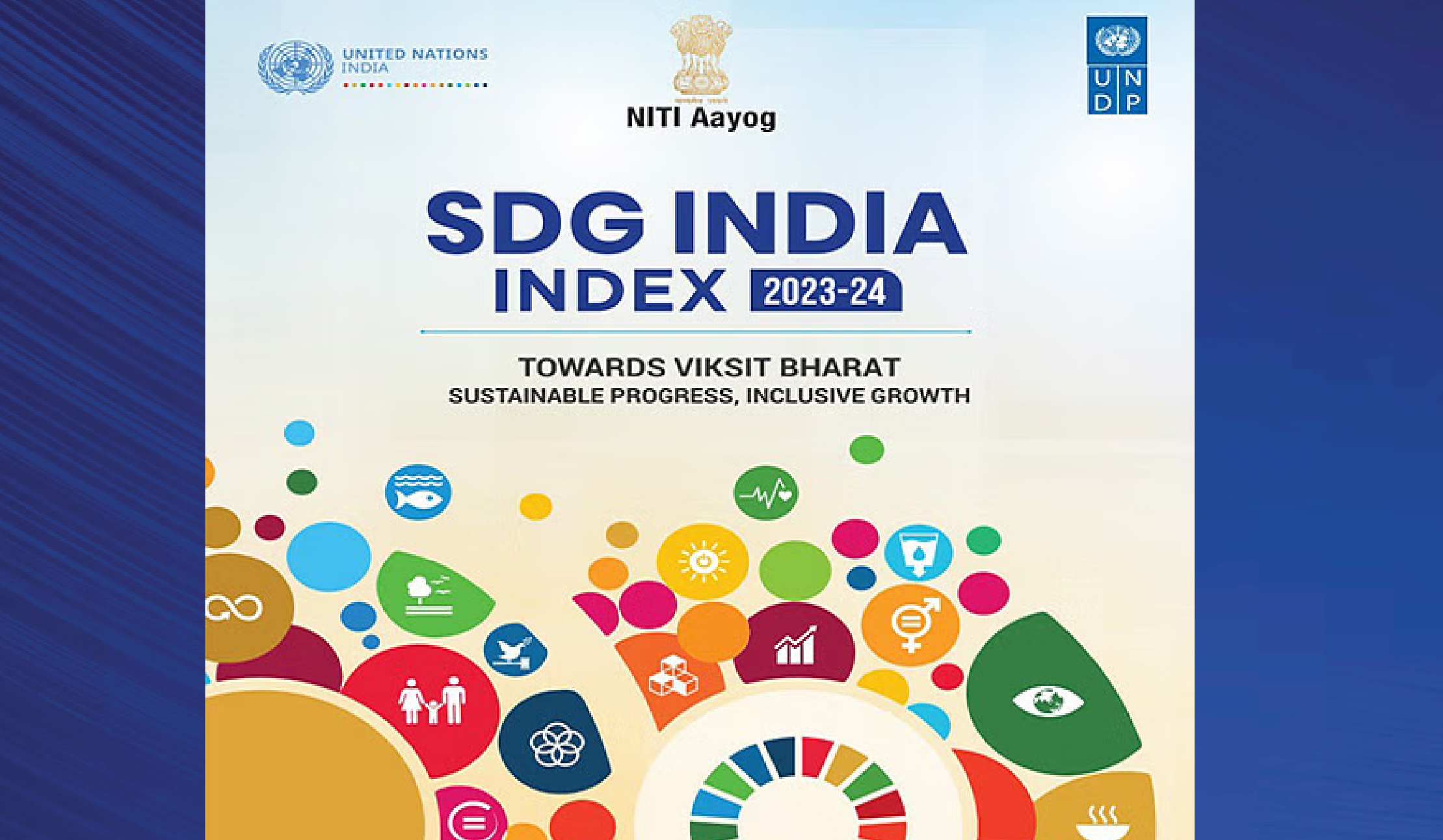Why in the News?
Recently, UN Sustainable Development Goals (SDG), also known as Global Goals, completed ten years since their adoption in September 2015.
About Sustainable Development Goals (SDGs)
- Sustainable development was first defined in World Commission on Environment and Development's 1987 Brundtland Report as development that meets the needs of present without compromising the ability of future generations to meet their own needs.
- In 2015, all the countries in United Nations adopted 2030 Agenda for Sustainable Development. It sets out 17 SDGs, which include 169 targets.
- SDGs are a call to action to end poverty and inequality, protect the planet, and ensure that all people enjoy health, justice and prosperity. It is critical that no one is left behind.
Progress towards achieving SDGs
- Global (as per 10th edition of Sustainable Development Report (SDR), 2025)
- Finland has been ranked first in SDG Index with a score of 87, followed by Sweden and Denmark. On average, East and South Asia has shown fastest progress on SDGs since 2015, driven notably by rapid progress on socioeconomic targets.
- Only 17% of SDG targets are on track to be achieved by 2030.
- Most UN member states have made strong progress on targets related to access to basic services and infrastructure, including mobile broadband use and internet use (SDG 9), access to electricity (SDG 7), under-5 mortality rate and neonatal mortality (SDG 3).
- India's progress in achieving SDGs
- For the first time, India ranks among top 100 in SDG Index at 99 in 2025 with a score of 67 out of 100. (SDR, 2025)
SDG | Achievement(s) |
SDG-1 (No Poverty) | Over 135 million people have moved out of multidimensional poverty between 2015-2016 and 2019-2021. (NITI Aayog SDG India Index 2023-24) |
SDG-2 (Zero Hunger) | Prevalence of undernourishment in 2021-23 is 13.7%. (SOFI 2024) |
SDG-3 (Good Health and Well-Being) | Maternal mortality ratio (Per 100,000 live births) declined to 80.5 in 2023 from 130 in 2014-16. (SDR, 2025) |
SDG-4 (Quality Education) | Net primary enrollment rate is 99.9% in 2024. (SDR, 2025) |
SDG- 5 (Gender Equality) | Demand for family planning satisfied with modern methods rose to 77.5% in 2024. (SDR, 2025) |
SDG- 7 (Clean Energy) | 99.2% population have access to electricity in 2022. (SDR, 2025) |
SDG- 9 (Industry, Innovation and Infrastructure) | 886 million active internet users in 2024. (IAMAI, 2024) |
Integration of SDGs into India's Development Planning
- Whole-of-Government Approach: India adopted a comprehensive approach by integrating SDGs vertically across the three tiers of government (central, state, and local) and horizontally across ministries.
- Example: NITI Aayog acts as the central coordinating body to facilitate SDG implementation across sectors and states, ensuring systemic alignment. NITI Aayog's State Support Mission further bolsters the bottom-up approach for fostering inclusive and sustainable development.
- Data-Driven Competitive Federalism: e.g., NITI Aayog's SDG India Index, School Education Quality Index, State Health Index, Composite Water Management Index, SDGs India Index, etc.
- Localization: e.g., NER District SDG Index has directly influenced targeted investment in Northeastern states, including the $825 million investment via PM-DevINE scheme.
- Institutionalization of SDGs: Several states have set up dedicated SDG Coordination and Acceleration Centres to institutionalize and mainstream SDG efforts within governance frameworks, improving accountability and implementation capacity.
- Inclusive and Equitable Focus: Aspirational Districts Programme (ADP) focuses on lagging regions and addresses various socioeconomic challenges by sharing responsibilities, expertise and resources, ensuring equitable SDG delivery.
- E.g., As per UNDP report, aspirational districts experienced improved development outcomes in just 3 years of ADP implementation.
Issues faced in achieving SDGs
- Data Availability: e.g., SDG India Index 2023-24 does not measure indicators of SDG 17 owing to the unavailability of suitable data at State/UT level.
- Regional Disparities: e.g., Bihar, Jharkhand, Uttar Pradesh have emerged as poorest states in India while Kerala Sikkim, Tamil Nadu have registered lowest poverty across India. (MPI report, 2023)
- Financial Constraints: Persistent financing gap driven by difficulties in mobilizing domestic resources, limited access to private finances, and constraints in leveraging international development cooperation, etc.
- Institutional and Governance: Despite efforts to mainstream SDGs in planning, varying capacities and coordination across ministries, states, and local bodies affect uniform implementation, impacting SDG progress.
- Example, while measuring progress of developmental schemes, focus is on Central Sector Schemes, while schemes implemented by State Governments are often overlooked in measuring progress.
- Sustainability Challenges: Balancing rapid economic growth with environmental protection remains difficult, especially in areas like renewable energy expansion, forest conservation, and reducing emissions intensity.
- Pandemic After-effects: Learning losses and interrupted healthcare services due to COVID-19 have reversed years of human development gains.
Way Forward
- Data quality: Strengthening data systems and capacity building at national and sub-national levels to improve data availability, quality, and monitoring.
- Mobilise finances: Enhancing financial resource mobilization by boosting domestic revenue generation, increasing private and international participation through innovative financing instruments.
- Governance: Promoting cooperative federalism by strengthening institutional frameworks and coordination among central, state, and local governments. Further, integrating SDGs into sectoral policies and budgets systematically to ensure policy coherence and financial alignment
- Engaging stakeholders: Encouraging multi-sectoral partnerships and wider societal participation including civil society, academia, and private sector for more inclusive implementation.
- Sustainability: Development policies must integrate environmental sustainability by promoting clean energy, efficient water management, waste reduction, and conservation of natural ecosystems.
- Example: Prioritizing renewable energy expansion, waste-to-energy projects, water resource management, etc.
Conclusion
India's decade-long journey with the SDGs shows meaningful progress in key social and infrastructure indicators. With sustained institutional coordination and inclusive stakeholder participation, India can accelerate its path toward achieving the SDGs by 2030.





